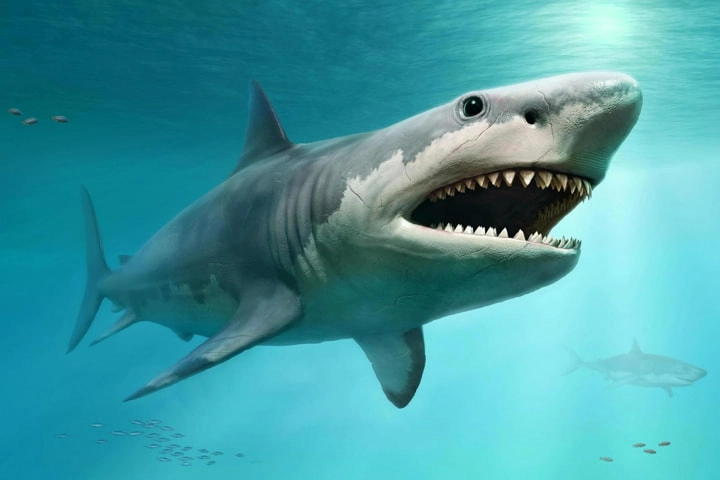The monstrous creature – Otodus megalodon – in 2018’s superhit sci-fi thriller “The Meg” remains etched in the memory of viewers because of its sheer menacing size. Now, a recent study as per a report in scitechdaily.com has disclosed that these extinct creatures also known as megatooth sharks became bigger in size in cooler environments than the warmer ones.
In their study, Kenshu Shimada, a professor of paleobiology at DePaul University along with other co-authors looked afresh at the body size patterns of megalodon, the fossil shark which was present between 15 to 3.6 million years ago on Earth, over time and space.
The scientists in their new study examined published records of geographic occurrences of the teeth of Meg in tandem with their estimated total body lengths.
Whatever is known to science about this species is through teeth and vertebrae in the fossil record. It is scientifically accepted that these creatures were huge in size, and grew to a minimum of 50 feet in length while some went on to attain 65 feet length.
Talking about their study Shimada remarked: “Our findings suggest a previously unrecognized body size pattern for the fossil shark, notably following a geography-driven ecological pattern known as Bergmann’s rule.”
Bergmann’s rule was conceptualised by Carl Bergmann, a German biologist in the mid-1800s and it is a broad generalization that expounds that in cooler climates animals which are large flourish. The reason for this is that size allows creatures to retain heat more efficiently as compared to smaller bodied animals.
Highlighting this, the study’s co-author Victor Perez, noted: “Scientists constantly search for rules of life that help us predict natural patterns, and it seems that Bergmann’s rule applied to Otodus megalodon.” Perez is a palaeontologist at Maryland’s Calvert Marine Museum.
Among the sites that yielded Megalodon fossils, some had been identified as possible nursery areas. The reason being the average size of the teeth found here were smaller than those found in other areas populated by Megalodon. The new study however, revealed that these nursery areas identified in the past, were actually located near the equator – places where the water was warmer.
Also read: How did scientists and artists reconstruct a 160 million years old fish lizard?
Highlighting this aspect, the co-author of the study Harry Maisch who is a faculty member at Fairleigh Dickinson University and Bergen Community College in New Jersey said: “It is still possible that O. megalodon could have utilized nursery areas to raise young sharks. But our study shows that fossil localities consisting of smaller Megalodon teeth may instead be a product of individual sharks attaining smaller overall body sizes simply as a result of warmer water.”
Sharing with the media as to how the thought to conduct this study came up, Martin Becker, another co-author said: “The idea of this new study originated from casual conversation that took place during a recent fishing trip to the Florida Keys by the lead author, his family and me, stemming from a basic question: where do large fish live?” Becker is from New Jersey’s William Paterson University and professor of environmental science there.
Even though the research was initiated to answer a simple question, it has vital and wider ramifications. Elucidating this, Michael Griffiths, co-author noted: “The results of this study have important implications for understanding how modern climate change is rapidly accelerating marine habitat shifts to more polar latitudes in apex predators such as sharks.”
Also read: Study confirms killer whales hunt in packs to feast on Earth’s biggest creature – the blue whale
Griffiths is a professor of environmental science at William Paterson University.
Summing up their study, Shimada stated: “The main conclusion of this study is that not all geographically different Megalodon individuals grew to gigantic sizes equally. The common notion that the species reached 18–20 m TL should be applied primarily to populations that inhabited cooler environments.”
The details of the study have been published in the international journal Historical Biology.




















